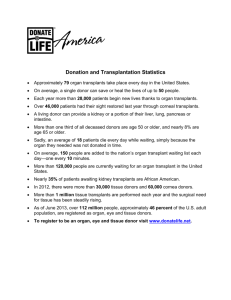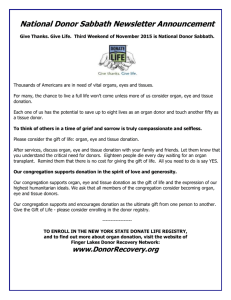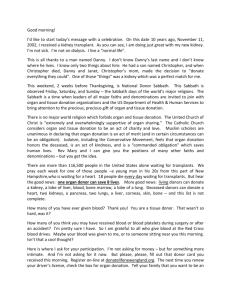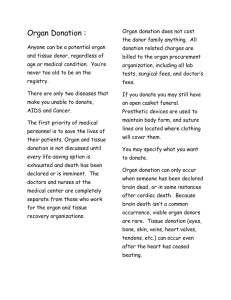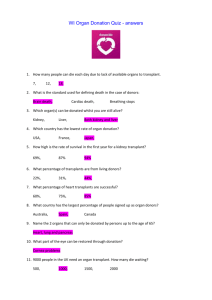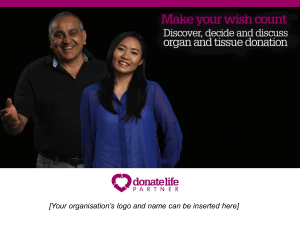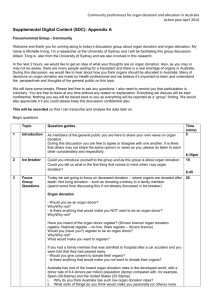Coalition on Donation - Donate Life Northwest
advertisement
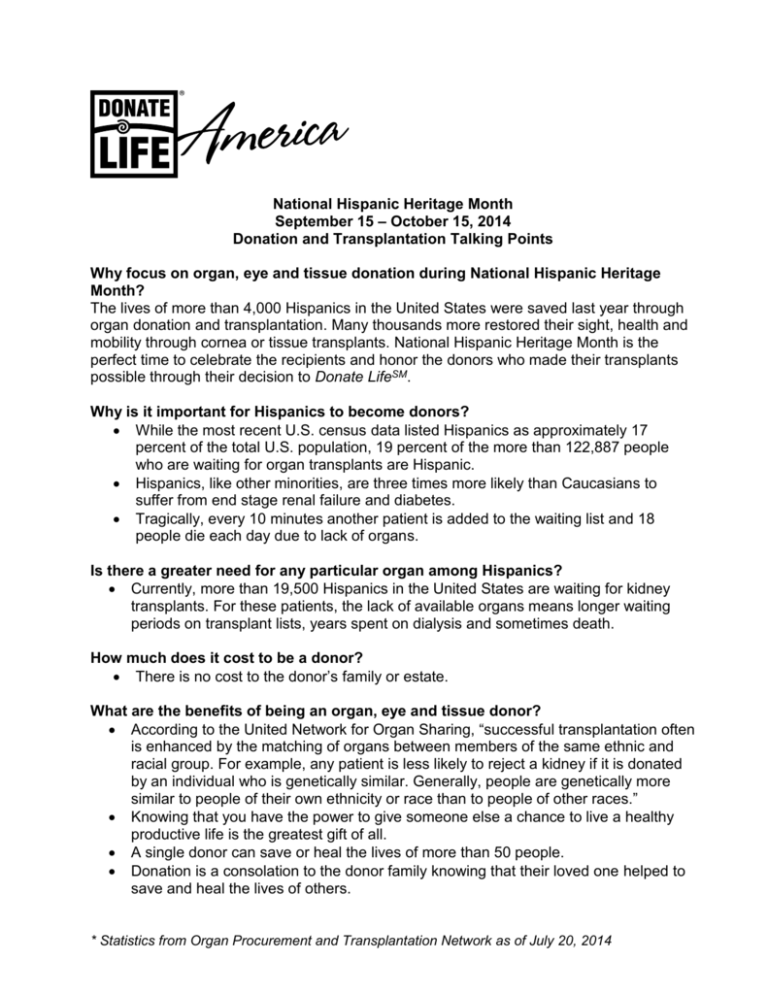
National Hispanic Heritage Month September 15 – October 15, 2014 Donation and Transplantation Talking Points Why focus on organ, eye and tissue donation during National Hispanic Heritage Month? The lives of more than 4,000 Hispanics in the United States were saved last year through organ donation and transplantation. Many thousands more restored their sight, health and mobility through cornea or tissue transplants. National Hispanic Heritage Month is the perfect time to celebrate the recipients and honor the donors who made their transplants possible through their decision to Donate LifeSM. Why is it important for Hispanics to become donors? While the most recent U.S. census data listed Hispanics as approximately 17 percent of the total U.S. population, 19 percent of the more than 122,887 people who are waiting for organ transplants are Hispanic. Hispanics, like other minorities, are three times more likely than Caucasians to suffer from end stage renal failure and diabetes. Tragically, every 10 minutes another patient is added to the waiting list and 18 people die each day due to lack of organs. Is there a greater need for any particular organ among Hispanics? Currently, more than 19,500 Hispanics in the United States are waiting for kidney transplants. For these patients, the lack of available organs means longer waiting periods on transplant lists, years spent on dialysis and sometimes death. How much does it cost to be a donor? There is no cost to the donor’s family or estate. What are the benefits of being an organ, eye and tissue donor? According to the United Network for Organ Sharing, “successful transplantation often is enhanced by the matching of organs between members of the same ethnic and racial group. For example, any patient is less likely to reject a kidney if it is donated by an individual who is genetically similar. Generally, people are genetically more similar to people of their own ethnicity or race than to people of other races.” Knowing that you have the power to give someone else a chance to live a healthy productive life is the greatest gift of all. A single donor can save or heal the lives of more than 50 people. Donation is a consolation to the donor family knowing that their loved one helped to save and heal the lives of others. * Statistics from Organ Procurement and Transplantation Network as of July 20, 2014 Does the church support organ, eye and tissue donation? Every major religion in the United States supports organ, eye and tissue donation as one of the highest expressions of compassion and generosity. How can I become an organ, eye and tissue donor? Sign up in your state donor registry. For instructions, visit www.donatelife.net/register-now and click on your state. Always remember, it is important to tell your family members that you have decided to become a donor so that they will understand and support your decision. What can I do to increase organ, eye and tissue donation in my community? Tell family and friends about your decision to Donate LifeSM. Ask them to get the facts, and consider registering as a donor. Go to www.donatelife.net for tips and tools for educating members of your community about the lifesaving gift of organ, eye and tissue donation. These may include: o Placing articles in newsletters o Hanging posters around the community o Handing out brochures o Including flyers in church bulletins o Using Donate Life web banners and graphics on your personal or organizational website and social media pages o Wearing Donate Life lapel pins, awareness band and other gear * Statistics from Organ Procurement and Transplantation Network as of July 20, 2014


